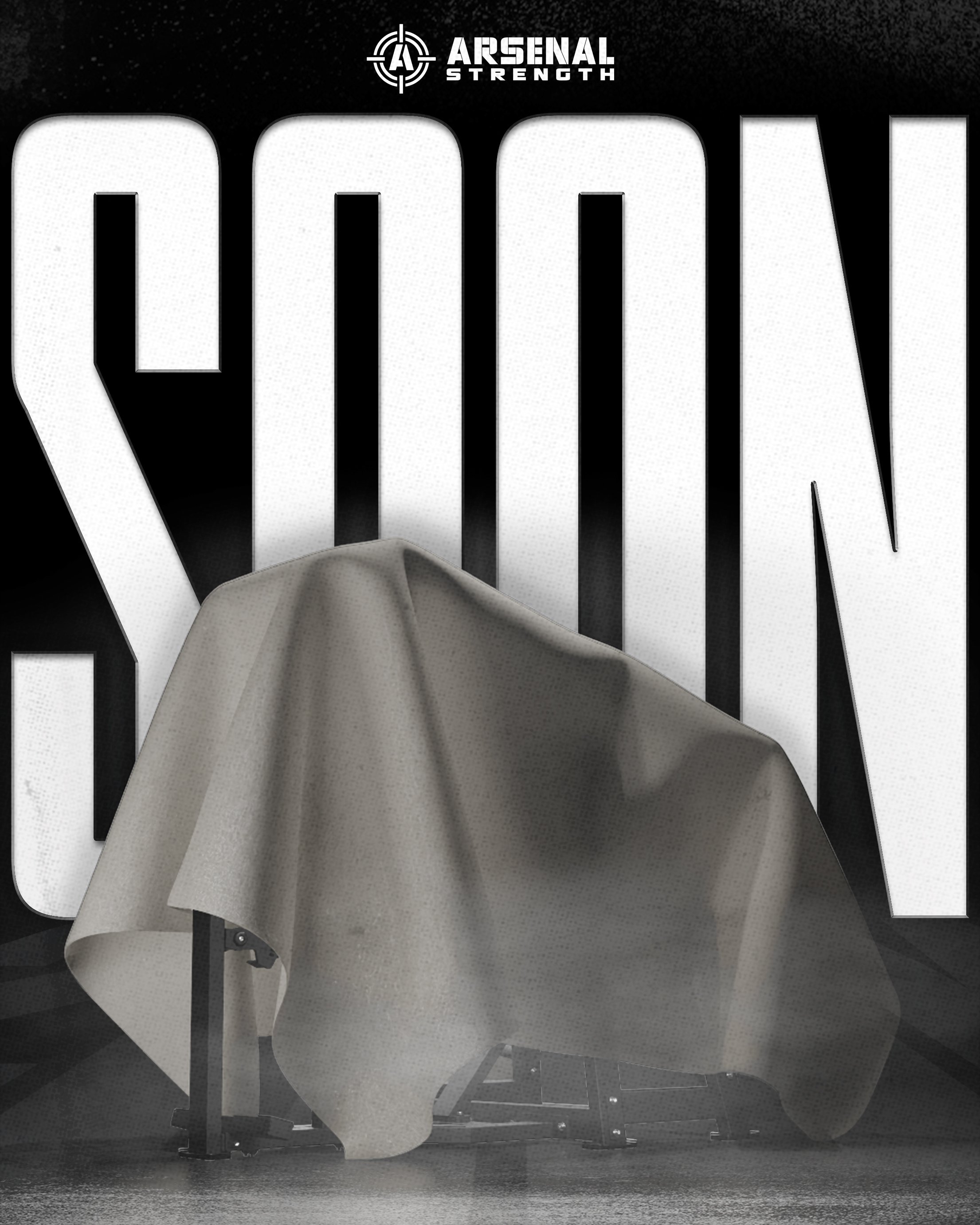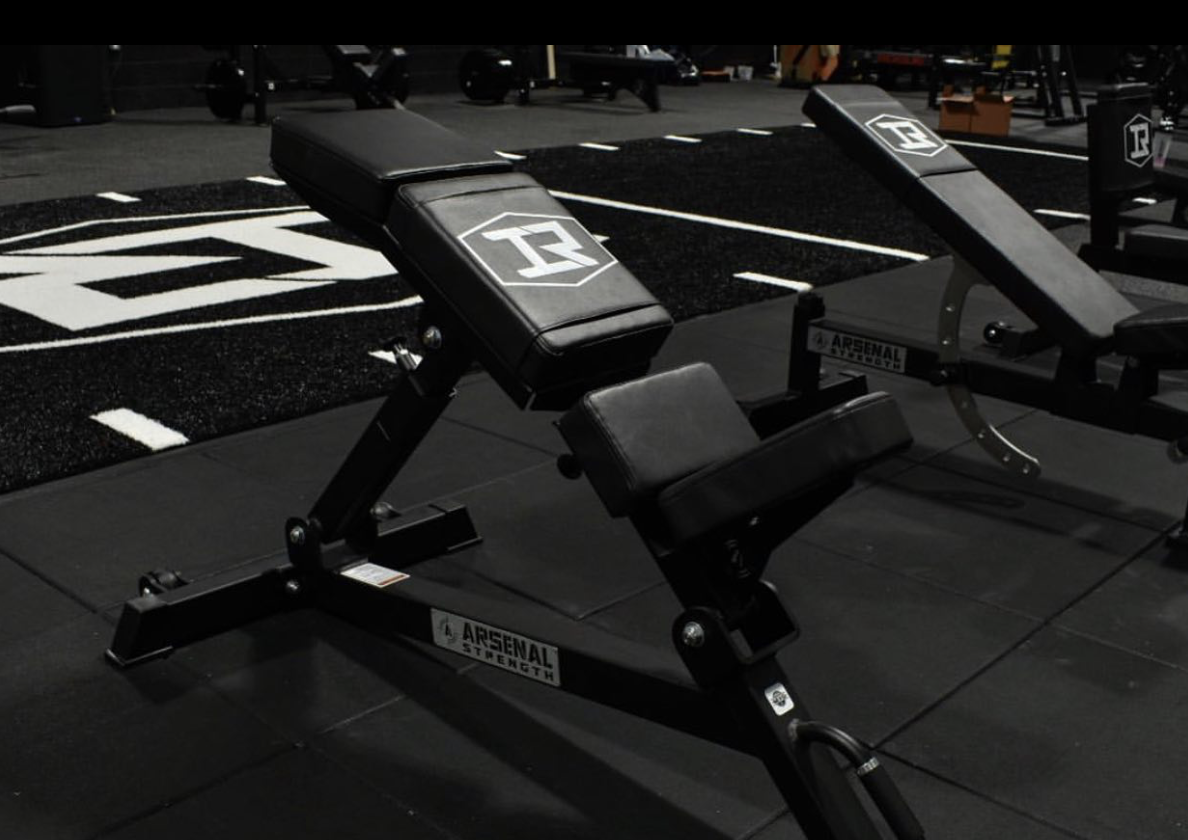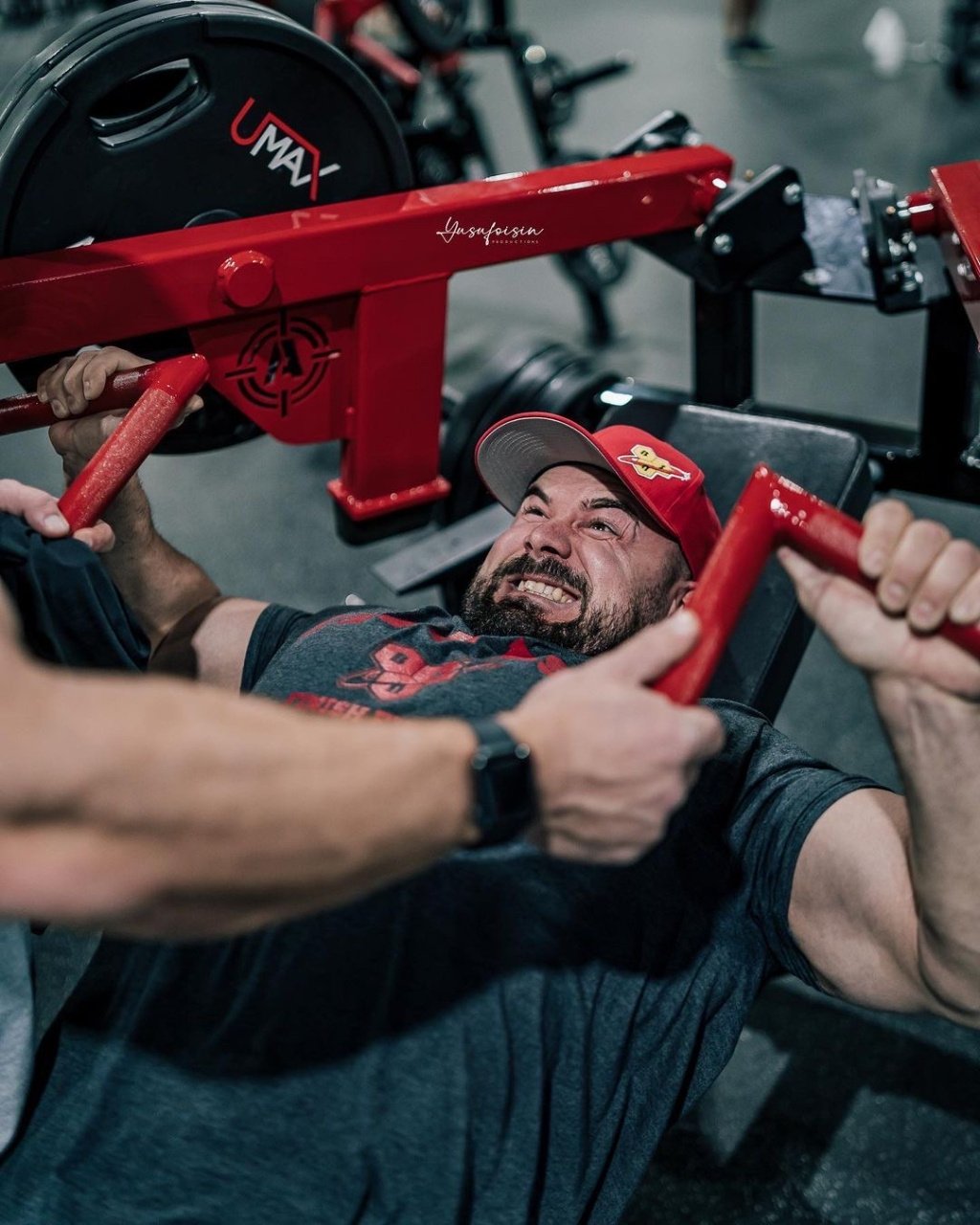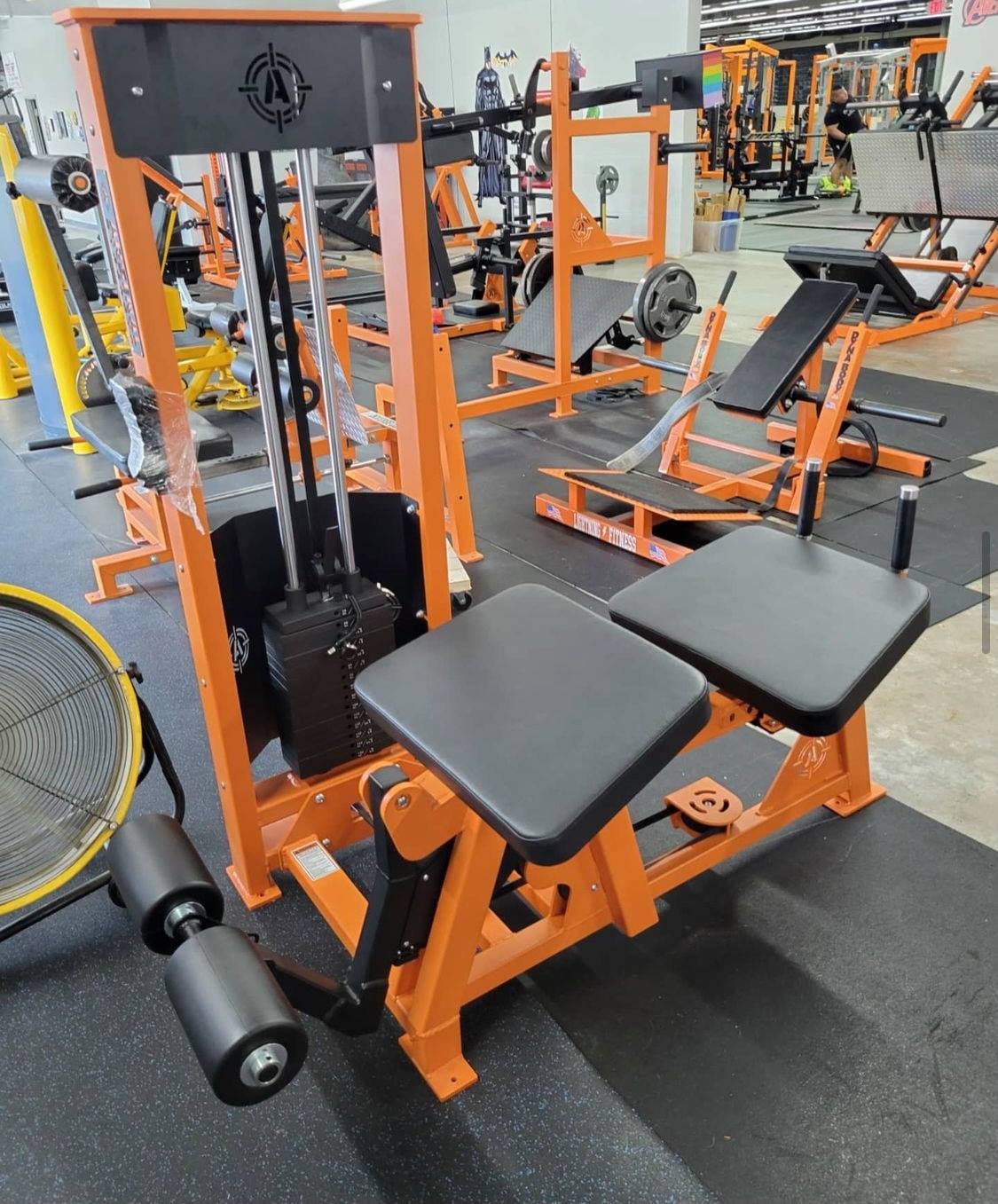Guide for How to do Rear Delt Flys on Pec Deck
Rear delt flys are a great exercise for the often forgotten rear deltoids, an important muscle group for shoulder health and overall upper body development. Doing rear delt flys on the pec deck is a controlled and effective way to isolate these muscles. Here are the benefits, form, mistakes, variations, and how to add rear delt flys to your workout.
Rear Delt Flys on Pec Deck Benefits
- Isolation: The pec deck machine allows for precise isolation of the deltoid muscle using minimal movement.
- Posture: Strengthening the deltoids helps counteract the forward shoulder roll from sitting or poor posture, and promotes a more upright stance.
- Shoulder Stability: A strong rear deltoid contributes to overall shoulder stability, and reduces injury risk during other upper-body exercises.
- Aesthetics: Developing deltoids helps create a balanced shoulder shape and overall upper body aesthetics.
- Versatility: The pec deck machine can be adjusted for various body types and sizes, making it a versatile tool for the rear delts.
Step by Step Instructions on How to Use the Pec Deck
.png?width=500&height=281&name=reverse-pec-deck-machine-benefits%20(1).png)
Step 1: Adjust the Pec Deck Machine:
- Set the seat height so the handles are at shoulder level.
- Adjust the rear fly pads so you have a comfortable grip with a slight bend in your elbows.
Step 2: Position Yourself
- Sit on the pec deck machine with your chest against the pad.
- Feet flat on the floor, shoulder width apart.
- Grip the handles with your palms facing each other, not too tight but firm.
Step 3: Starting Position
- Sit upright with your back straight and core engaged.
- Elbows slightly bent and arms parallel to the floor.
- Inhale deeply.
Step 4: Execution
- Exhale and slowly bring the handles out to your sides, squeeze your shoulder blades together.
- Controlled movement, no momentum.
- Continue until your arms are out to your sides, shoulder level.
- Pause for a second at the peak contraction, feel the rear deltoids.
Step 5: Return to Starting Position
- Inhale and slowly bring the handles back to the starting position, control the movement.
- Don’t let the weights slam back into place.
Step 6: Perform the Reps
- 3-4 sets of 10-15 reps, focus on form throughout each set.
Pec Deck Mistakes to Avoid
Too Much Weight:
Overloading the machine will lead to poor form and injury. Start with a weight you can handle and gradually increase as you get stronger.
Rushing the Movement:
Doing the exercise too fast reduces the muscle contraction. Focus on slow and controlled movements to engage the muscle.
Wrong Seat Height:
Wrong seat height will lead to poor alignment and ineffective targeting of the deltoids. Make sure the seat is adjusted so the handles are at shoulder level.
Overextending the Arms:
Extending the arms too far back will strain the shoulder joints. Keep a slight bend in your elbows and focus on the rear delt contraction.
Not Engaging the Core:
Weak core will lead to poor posture and instability. Engage your core to maintain a stable and upright position throughout the exercise.
Rear Delt Flys on Pec Deck Variations

Single Arm Rear Delt Flys:
Do the exercise one arm at a time to isolate each rear delt and address any imbalances.
Alternating Rear Delt Flys:
Alternate arms during each rep to add variety and challenge your coordination.
Paused Reps:
Add a pause at the peak contraction to increase time under tension and engagement.
Tempo Variations:
Vary the tempo of your reps, slow eccentric (lowering) and explosive concentric (lifting) to hit different muscle fibers.
Resistance Bands:
Attach resistance bands to the pec deck machine to add variable resistance and challenge your muscles differently.
How to Include Rear Delt Flys in Your Workout
Warm-Up:
Start with a full warm-up to get blood flow to your muscles and your body ready for exercise. Include dynamic stretches and light cardio to get your heart rate up.
Shoulder Routine:
Add rear delt flys to your shoulder routine along with other shoulder exercises like overhead presses, lateral raises and front raises.
Upper Body Routine:
Combine rear delt flys with other upper body exercises like chest presses, rows and bicep curls for a full upper body workout.
Back Day:
Add rear delt flys to your back routine to target the deltoids and overall back development.
Cool Down:
Finish your workout with a cool down to promote recovery and flexibility. Include static stretches for your shoulders, chest and back.
Example Workout
Warm-Up (10 minutes)
- Dynamic stretches: arm circles, shoulder rolls, torso twists
- Light cardio: jumping jacks, high knees
Main Workout (45 minutes)
- Overhead Shoulder Press: 3 x 12
- Lateral Raises: 3 x 15
- Rear Delt Flys on Pec Deck: 4 x 12-15
- Bent-Over Dumbbell Rows: 3 x 10-12
- Face Pulls: 3 x 15
- Cable Front Raises: 3 x 12
- Static stretches: shoulder stretch, tricep stretch, chest stretch
- Deep breathing exercises
Tips to Get the Most Out of The Reverse Pec Deck Exercise
Consistency:
Do rear delt flys regularly to see progress and muscle growth.
Progressive Overload:
Increase weight and intensity over time to challenge your muscles and growth.
Nutrition:
Feed your body with a balanced diet rich in protein, healthy fats and complex carbs to support recovery and growth.
Rest:
Give your muscles time to recover between workouts to avoid overtraining and injury.
Mind-Muscle Connection:
Focus on the rear delt contraction during each rep to engage and get the most out of the exercise.
Rear Delt Fly Isolation Exercise FAQs
Q: Can I do rear delt flys on the pec deck if I have shoulder pain?
A: If you have shoulder pain, you should consult with a doctor before doing any exercise. They can tell you what exercises are safe for your condition.
Q: How often can I do rear delt flys on the pec deck?
A: Do rear delt flys 1-2 times a week with adequate rest in between.
Q: Can beginners do rear delt flys on the pec deck?
A: Yes, beginners can do rear delt flys on the pec deck. Start with light weight and master the form before increasing the intensity.
Q: What are the signs of bad form during rear delt flys?
A: Signs of bad form are arm swinging, lack of control during the movement and discomfort in the shoulder joints. Focus on slow and controlled movement and proper alignment.
Q: Are rear delt flys on the pec deck for all fitness levels?
A: Yes, rear delt flys on the pec deck can be adjusted for different fitness levels by changing the weight and reps. It’s for beginners, intermediate and advanced lifters.
Reverse Pec Deck Machine and Rear Delt Raise
Rear delt flys on the pec deck is an effective exercise to target the deltoids, improve shoulder stability and overall upper body strength. Follow the proper form, avoid the common mistakes and variations to get the most out of this exercise. Whether you’re a beginner or an experienced lifter, add rear delt flys to your workout and get a balanced and developed physique. Remember to be consistent, focus on nutrition and rest to support your fitness journey.
Additional Rear Delt FLy and Pec Deck Resources:

.png)




